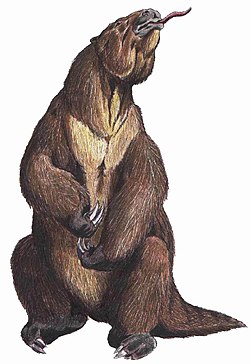| Oreomylodon Temporal range: Late Pleistocene ~ | |
|---|---|
 | |
| Skull of Oreomylodon | |
| Scientific classification | |
| Kingdom: | Animalia |
| Phylum: | Chordata |
| Class: | Mammalia |
| Order: | Pilosa |
| Family: | † Mylodontidae |
| Subfamily: | † Mylodontinae |
| Genus: | † Oreomylodon Hoffstetter 1949 |
| Species | |
| |
Oreomylodon is an extinct genus of ground sloth in the family Mylodontidae, endemic to Ecuador during the Pleistocene. The only species, O. wegneri, was long considered to be either a species or subgenus [1] of Glossotherium (as G. wegneri) or a junior synonym of Glossotherium robustum, but studies of its cranial anatomy published in 2019 have supported Oreomylodon as a valid genus, and suggested it is more closely related to Paramylodon . [2] However, a subsequent analysis published in 2020 again sunk Oreomylodon wegneri into Glossotherium, as a distinct species. [3]

